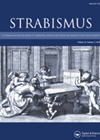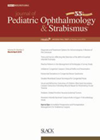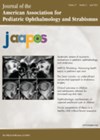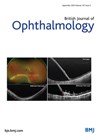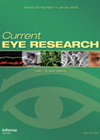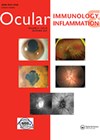
Journal Reviews
Natural history of optic nerve head drusen in a paediatric population
A retrospective case notes review is presented focusing on children diagnosed with optic nerve head drusen over an eight-year period. Inclusion criteria included cases coded for optic nerve head drusen and / or pseudopapilledema. The aim of the study was...
Medium-term outcomes following photo screening
A photo-screening project of preverbal children was conducted in 2016 in Portugal consisting of enrolment of two-year-old children and referral of these if having a positive screen to paediatric ophthalmology plus a screen of four-year-old children who missed or had...
How common are ocular disorders in the first 12-months of life?
The authors present a retrospective case review of all children aged under one year of age diagnosed with an ocular disorder over a 10-year period. The aim of the study was to describe incidence and types of ocular disorder in...
Attracting workforce to paediatric ophthalmology
This was a survey-based study to address unanswered questions relating to economic and workforce issues in paediatric ophthalmology. The survey comprised 12 questions with yes / no or multiple-choice responses and was circulated to American Association for Pediatric Ophthalmology and...
Retinal nerve fibre layer thickness in migraine
The aim of this study is to evaluate retinal nerve fibre layer (RNFL) thickness changes in children with migraine compared to healthy controls and analyse RNFL changes dependent on type of migraine. This was an observation case control study of...
Outcomes for acute acquired non-accommodative comitant esotropia
Outcomes are reported in a retrospective review of 338 patients with acute acquired non-accommodative comitant esotropia (AACE). Mean age at presentation was 12.60 ±9.37 years and 220 were male, 118 female. Best corrected visual acuity was 0.2 ±0.29 logMAR overall;...
Incidence and clinical characteristics of paediatric keratitis
This is a retrospective, population-based study of a 10-year period from Mayo Clinic, USA between January 2000 and December 2009 of patients <19 years diagnosed with keratitis. Two-hundred and eight-five children were identified. An incidence of 78 per 100,000 and...
Refractive surgery for anisometropic amblyopia
The authors report the outcomes of refractive surgery with phakic intraocular lens (PIOL) implant for management of anisometropic amblyopia in children intolerant to conventional therapy. This was a retrospective study of 71 eyes of 71 patients of which 58 were...
Extraocular muscle disinsertion outcomes for large angle strabismus
The authors present a case series of patients who underwent surgical extraocular muscle (EOM) disinsertion for severe cranial nerve palsy or thyroid eye disease including 12 patients (13 eyes: 10 male, three female). There was one bilateral case – bilateral...
Internal limiting membrane (ILM) peeling on blood flow in diabetic macula
This is a retrospective review of notes for diabetic patients with epiretinal membrane (ERM) who underwent surgery by the same surgeon. Nineteen had ERM peeling only, while the remaining 18 had both ERM and internal limiting membrane (ILM) peeling. The...
Ocular manifestations of Whipple’s disease
In this retrospective review of 217 patients with Whipple’s disease (WD), the authors reviewed the presentations of those with ocular manifestations. Ocular signs of WD are under recognised, frequently resulting in misdiagnosis and mismanagement. Mayo Data Explorer, a Mayo Clinic...
Features of branchio-oculo-facial syndrome
Branchio-oculo-facial (BOF) syndrome is an autosomal dominant inherited syndrome that typically presents with branchial cleft sinus defects, ocular anomalies and dysmorphic facial appearance. The authors present a new case alongside the results of a literature review describing the common genetic...

